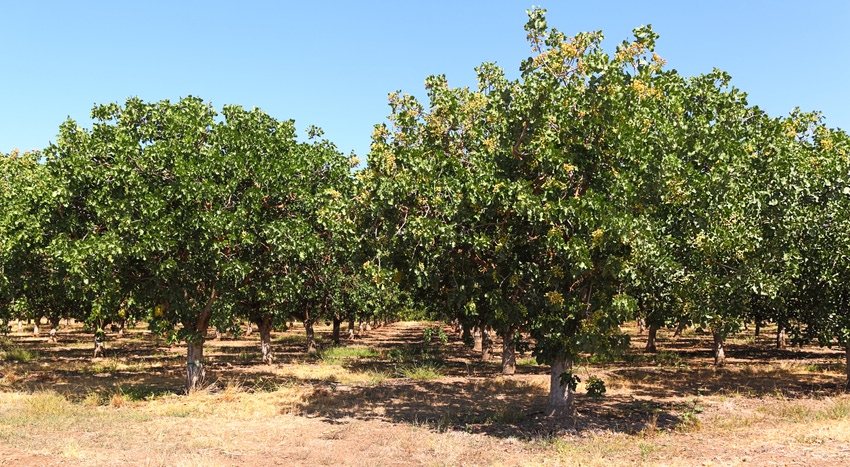
You are not alone when scouting your pistachio crop. Chances are scout birds are busily scoping out the maturing crop, ready to call in the rest of the flock to feed and put a dent in yields.
The primary bird pests in pistachios are members of the Corvidae family, including crows and ravens.
“They will begin to work the trees at hull spilt and can do a lot of damage in a hurry,” said Tim Peltzer of Peltzer Farm Management in Tulare County, Calif.
In the Pistachio Production Manual, University of California specialists Louise Ferguson and David Haviland note regular monitoring of pistachio orchards helps determine when damage starts so control efforts can be taken.
Observing bird movement in the orchard also helps detect the source of the bird invasions, and scare tactics to be initiated before feeding patterns become well established.
Scout birds often fly in search of food sources early in the morning and return to roosting areas to guide the flock to the feed. If scout birds are frightened away, the flock will choose another food source.
Peltzer, other growers, and farm managers report different hazing or scare tactics used to keep crows and other pesky birds from feeding on pistachio nuts.
These include workers armed with shotguns, recorded distress calls, or propane-powered cannon guns as common crow deterrents. The consistency in tactics usually pays off. Convincing scout birds that harassment will continue can send them searching for food elsewhere.
Peltzer said, “Crows are smart. If they learn we will be actively trying to keep them from feeding in our orchards they will choose to feed elsewhere.”
Roving shooters and distress calls via audio speakers in the orchard are two methods he uses. Shooters have been effective. Peltzer said the crows now recognize the shooters’ pickup truck in the orchard and leave the area knowing that shooting will commence soon.
Playing back recorded distress calls has also been effective for the grower. Speakers are placed higher than male pistachio trees and used through harvest time. Newer versions of distress calls can target specific bird species.
The generated noise affects communication between the birds, causing the flying pests to leave the area. Propane cannons, programmed to discharge at regular intervals, have been used yet some counties have use restrictions based on noise complaints.
Peltzer said some growers simply take their chances with crows and production losses. Certain areas where pistachios can be planted are attractive to crows, including power lines crossing the property.
Companies which specialize in urban bird removal are now considering agricultural applications with some success in pistachios and wine grape crops.
Rick Williams of New Jersey-based Flock Free say their bird control products aim to relocate birds and train them to stay away from a particular crop. The company has a ‘hazer’ method for agricultural areas.
This method uses dispensers that release methyl anthranilate into the air where birds fly into an orchard. The company says the product is actually a food product which irritates a nerve in the bird’s beak when inhaled.
“They learn to associate pain with the location and will avoid it,” Williams said.
About the Author(s)
You May Also Like




